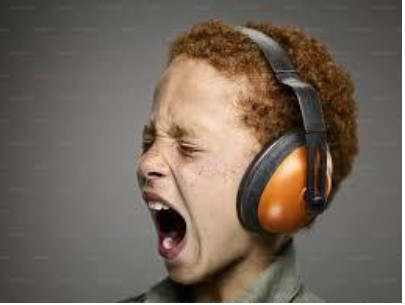Introduction
In most safety meetings, topics like fire drills, machinery guards, and chemical handling dominate the conversation. Yet, one hazard often goes unmentioned: workplace noise. Unlike a sudden accident, the effects of noise exposure are slow and subtle, making it easy to ignore until it’s too late.
According to the National Institute for Occupational Safety and Health (NIOSH), more than 22 million workers in the U.S. are exposed to hazardous noise levels every year. The effects of noise aren’t limited to hearing loss; they extend to mental, emotional, and physical health, making noise a complex and multifaceted hazard in the workplace.
While it may be tempting to think of noise as a mere nuisance, it is much more than that. Left unaddressed, it can lead to chronic health issues, decreased productivity, and increased workplace accidents. Therefore, understanding noise hazards and taking proactive steps to address them is essential for ensuring worker safety and well-being.
What Makes Noise a Hazard?
Noise becomes a hazard when:
It reaches 85 decibels (dB) or more over an 8-hour shift.
Workers must shout to be heard from a meter away.
Exposure is frequent and prolonged without adequate breaks or rest periods.
It’s important to understand that noise exposure is not just about volume; the duration of exposure also plays a crucial role in determining whether it poses a health risk. Prolonged exposure to high noise levels can have serious consequences on hearing health and overall well-being.
Examples of Common Noise Levels
Office Chatter: 60 dB – Considered normal conversational level.
Factory Floor: 90 dB – Common in industrial settings, where exposure can be constant without adequate protection.
Jackhammer: 120 dB – A common hazard in construction environments, often requiring protective measures.
Jet Take-off: 140 dB – Extremely high noise level that can cause immediate damage to hearing if experienced for even short durations.
Understanding these noise levels is crucial for assessing whether the workplace environment is safe and whether noise-related controls are needed.
The Impact of Noise on Workers
Prolonged exposure to high noise levels can have a significant impact on both physical health and mental well-being. Here are some of the key effects:
1. Permanent Hearing Loss
Noise-Induced Hearing Loss (NIHL) is irreversible once it sets in. It occurs when sound levels exceed the threshold where the hair cells in the inner ear become damaged. Over time, this damage leads to permanent hearing impairment, often starting with difficulty hearing high-frequency sounds.
NIHL is one of the most common occupational diseases. The World Health Organization (WHO) estimates that 360 million people worldwide suffer from disabling hearing loss, with workplace noise being a significant contributor.
2. Tinnitus
Tinnitus is characterized by persistent ringing, buzzing, or humming in the ears, often following exposure to loud noises. It can disrupt sleep, concentration, and overall quality of life.
Tinnitus is particularly dangerous in high-noise environments because it can lead to increased stress and anxiety, which further impair performance and focus at work.
3. Stress and Mental Fatigue
Noise has been shown to raise stress hormone levels, which makes workers more irritable and less productive. Chronic exposure to high noise levels increases mental fatigue, making it harder for workers to maintain focus and perform tasks efficiently.
Cognitive function is impaired in noisy environments, resulting in slower decision-making, decreased accuracy, and a higher likelihood of errors.
4. Communication Barriers
High noise levels make verbal communication difficult. In environments like construction sites or manufacturing plants, workers may struggle to understand critical instructions or warnings. This can increase the risk of accidents and injuries because safety alerts or vital instructions go unheeded.
5. Cardiovascular Issues
Long-term exposure to high noise levels is linked to increased blood pressure and heart disease. Noise-induced stress contributes to the elevation of heart rate and can lead to chronic cardiovascular problems, particularly in individuals with pre-existing conditions.
Industries Most Affected by Noise Hazards
Noise is a pervasive issue that affects workers across various industries, particularly those where loud machinery or repetitive tasks are common. The following industries are particularly vulnerable to noise hazards:
1. Construction
Drills, jackhammers, saws, and other heavy equipment can create extreme noise levels, often exceeding 100 dB. Workers in construction are at high risk of NIHL if adequate hearing protection isn’t provided. Additionally, miscommunication during high-noise tasks can lead to accidents and safety violations.
2. Manufacturing
Conveyor belts, stamping machines, and machinery used in factories generate continuous noise that can significantly affect workers’ hearing. Many manufacturing environments exceed 85 dB, which is the threshold for requiring hearing protection. Prolonged exposure to these noise levels can lead to both hearing loss and workplace accidents due to communication barriers.
3. Mining
Mining involves explosives, drilling, and heavy machinery, all of which contribute to extremely high noise levels. Workers in mines are often at risk of NIHL and tinnitus due to constant exposure to hazardous noise levels. Additionally, miners may miss vital communication signals or safety alarms due to high noise, increasing the risk of accidents.
4. Transportation
Airports, shipyards, and railway stations are inherently noisy environments. Aircraft engines, trains, and machinery in these areas expose workers to continuous high noise levels, often making it difficult for them to hear signals or radio calls, leading to delays and safety risks.
5. Hospitality & Entertainment
In loud music venues, bars, and restaurants, sound systems and crowd noise contribute to high noise levels. Workers in these environments face the risk of hearing damage and communication barriers that can affect both service quality and worker wellbeing.
Controlling Noise Hazards
Employers must take active measures to control and mitigate noise exposure in the workplace. Here are some methods for managing noise hazards:
1. Engineering Controls
Install acoustic barriers and sound-absorbing materials to minimize noise transmission.
Replace outdated machinery with quieter models to reduce noise at the source.
Create designated quiet zones or break rooms where workers can take respite from the noise.
2. Administrative Controls
Rotate staff to limit exposure to high noise levels for extended periods.
Schedule noisy work during non-peak hours or in shifts to minimize overall exposure.
Ensure that workers take regular breaks in quiet zones to help reduce fatigue and give their ears time to recover.
3. Personal Protective Equipment (PPE)
Provide earmuffs or earplugs for workers in high-noise environments.
Use combination protection for areas with extreme noise levels, offering both hearing protection and noise isolation.
4. Training and Awareness
Train workers to recognize noise hazards and the importance of wearing hearing protection.
Encourage workers to report unsafe noise levels or hearing issues to supervisors.
OSHA’s Role
OSHA requires employers to take action when noise exposure meets or exceeds 85 dB over an 8-hour period. The responsibilities include:
Conducting noise monitoring to measure exposure levels in the workplace.
Implementing a hearing conservation program, including providing PPE and regular hearing tests.
Providing hearing protection free of charge to employees.
Offering annual hearing tests to monitor employees’ hearing health.
Conclusion
Noise hazards may not cause immediate injuries, but their long-term effects can be just as damaging, if not more. Employers who address occupational noise safety not only protect their employees’ hearing but also their overall health, safety, and productivity. Implementing noise control measures and complying with OSHA standards can protect hearing, improve efficiency, and strengthen the bottom line.
A quieter workplace is not only a safer, healthier, and more productive one, but it also promotes better employee morale and business performance in the long run.


